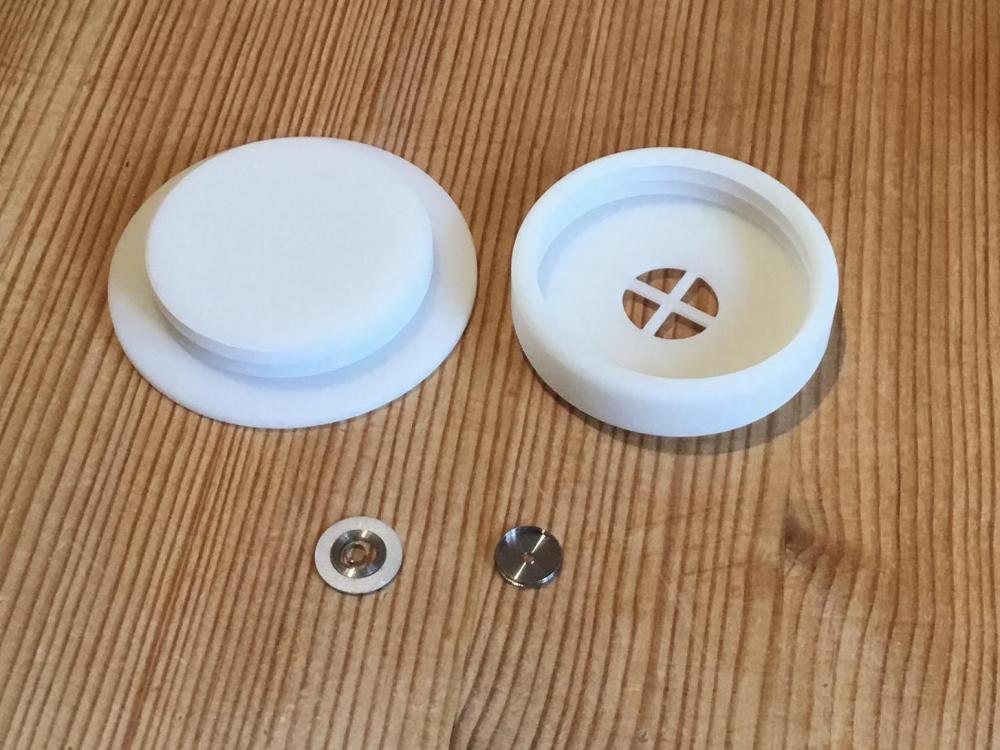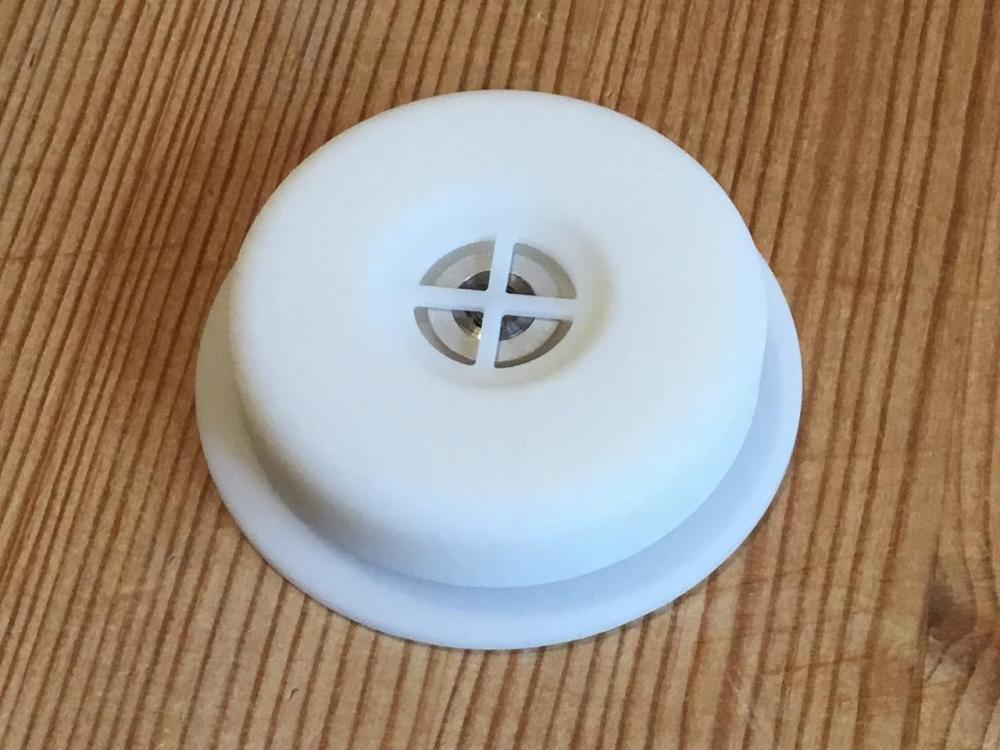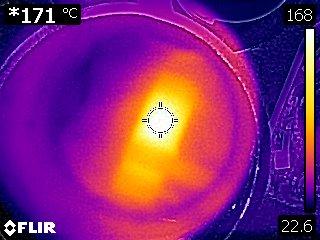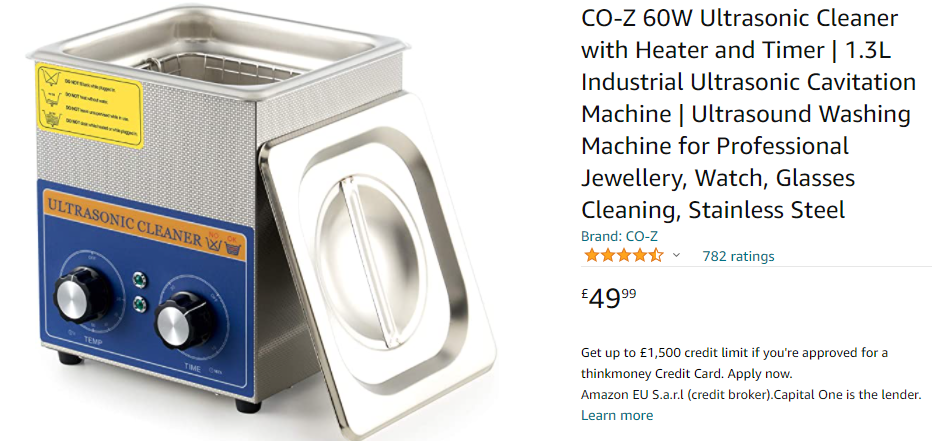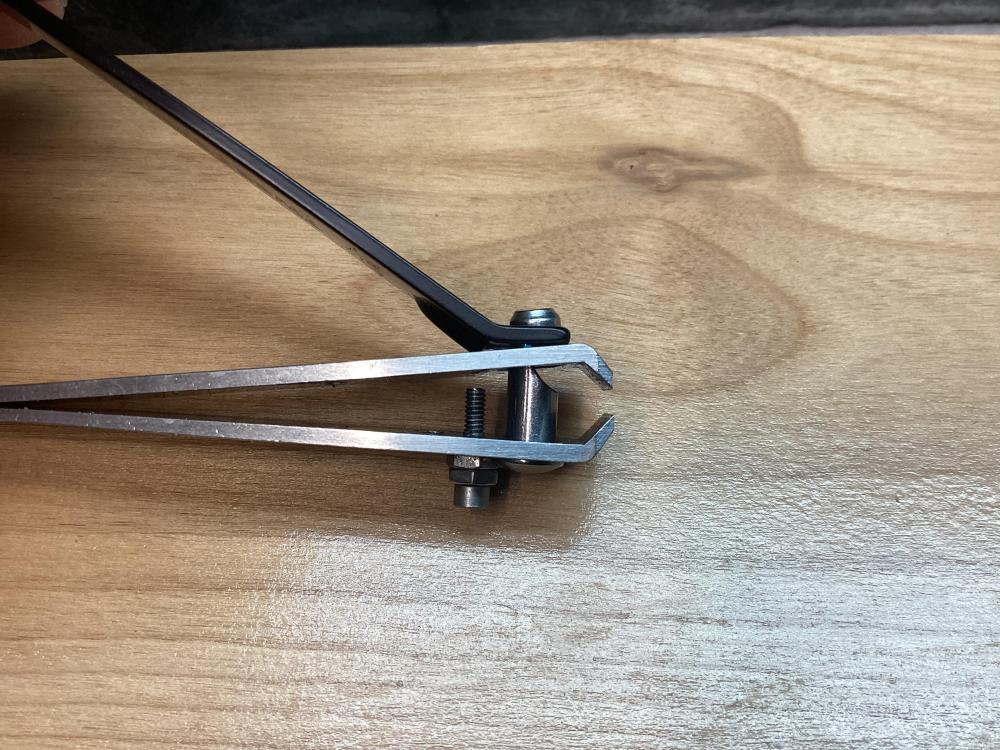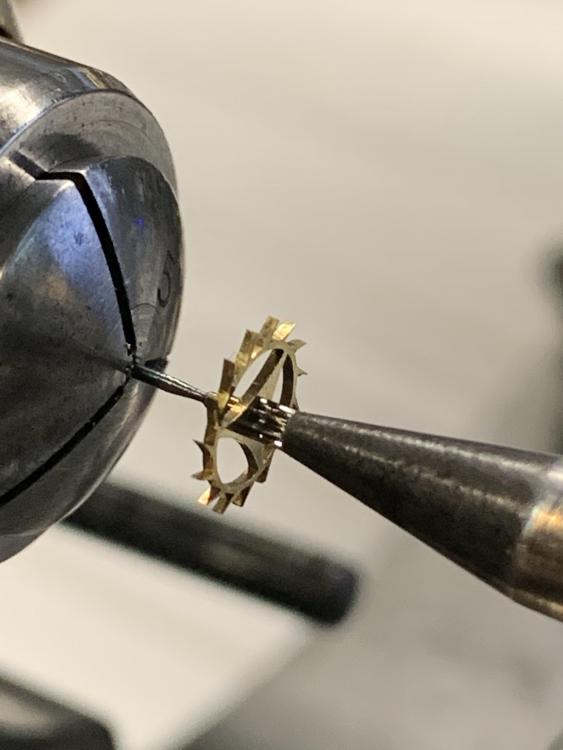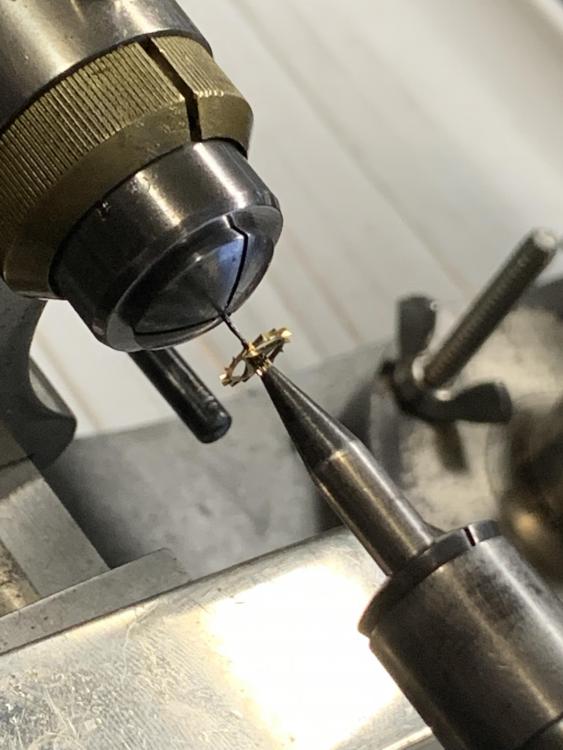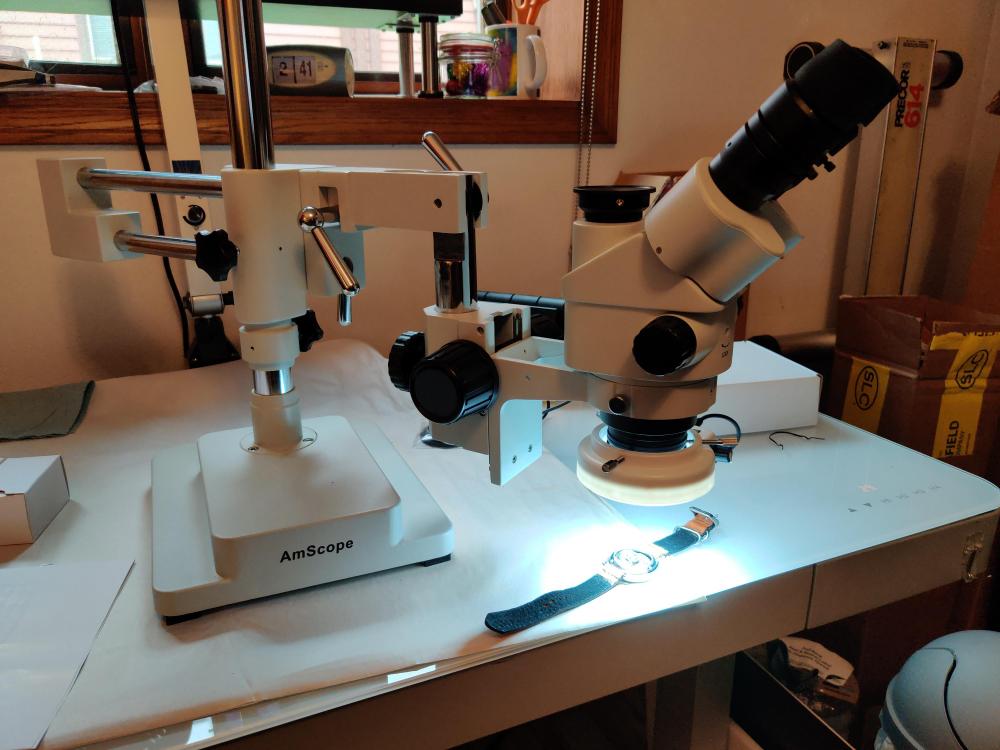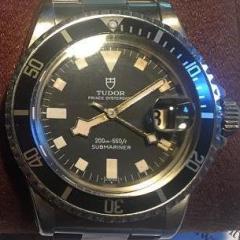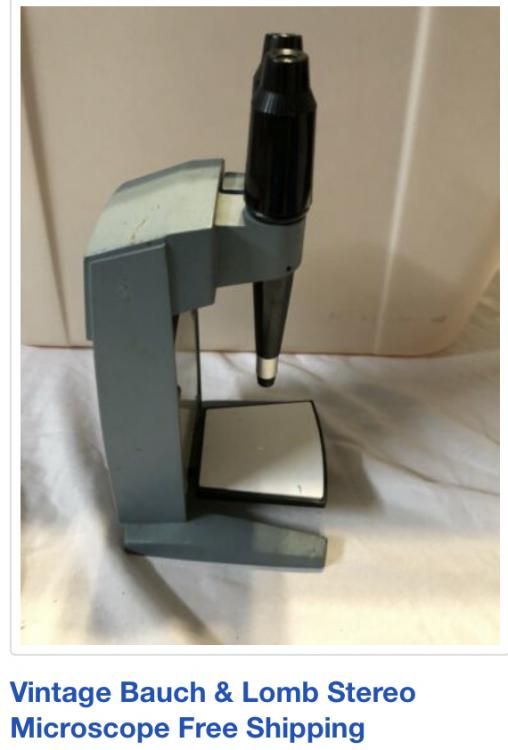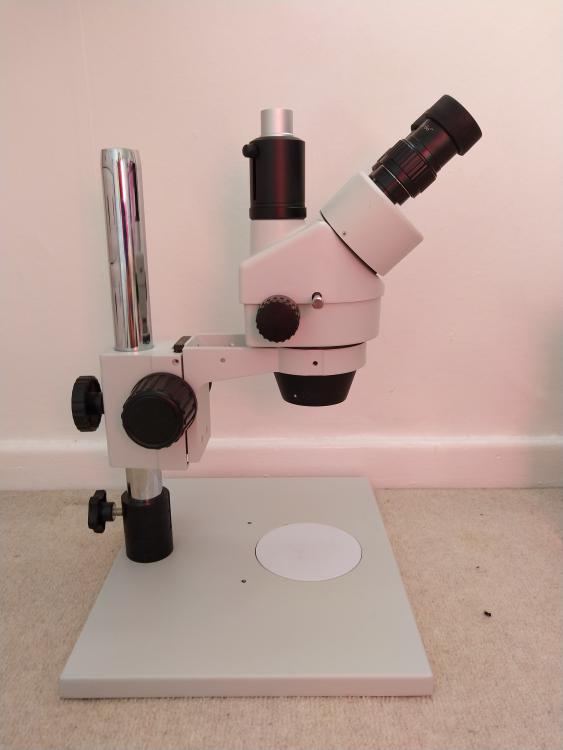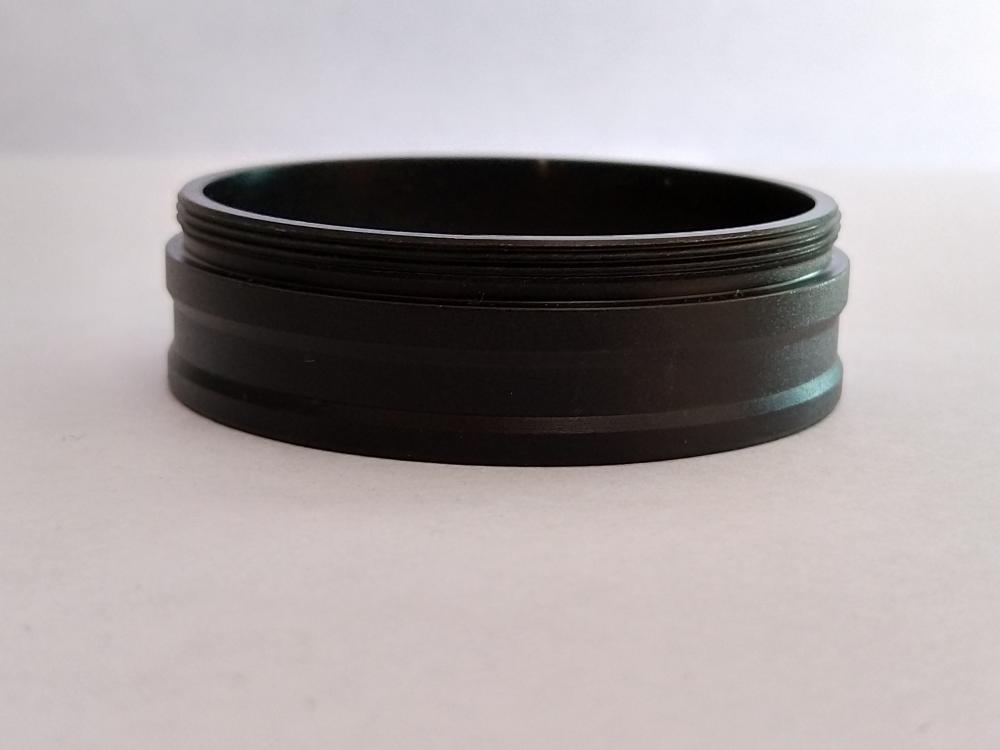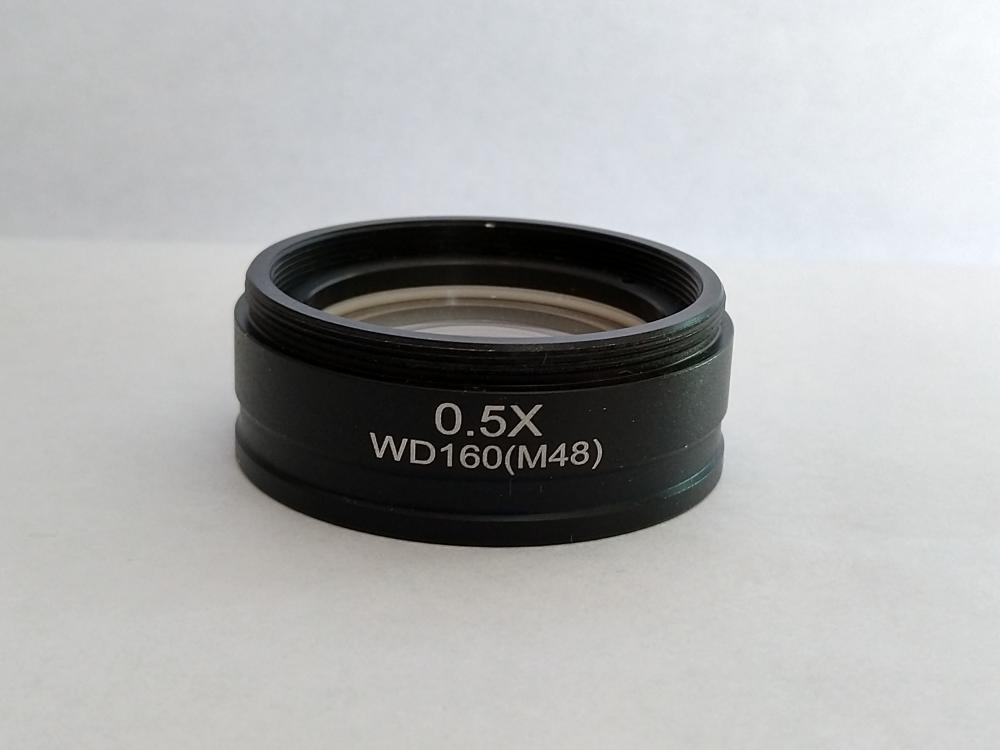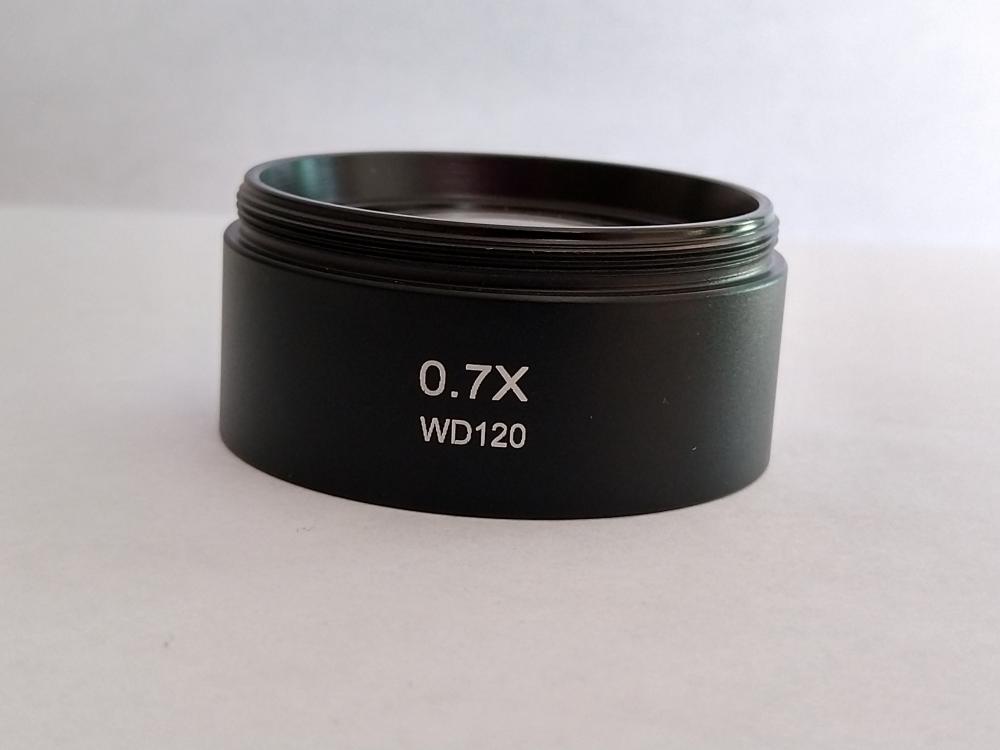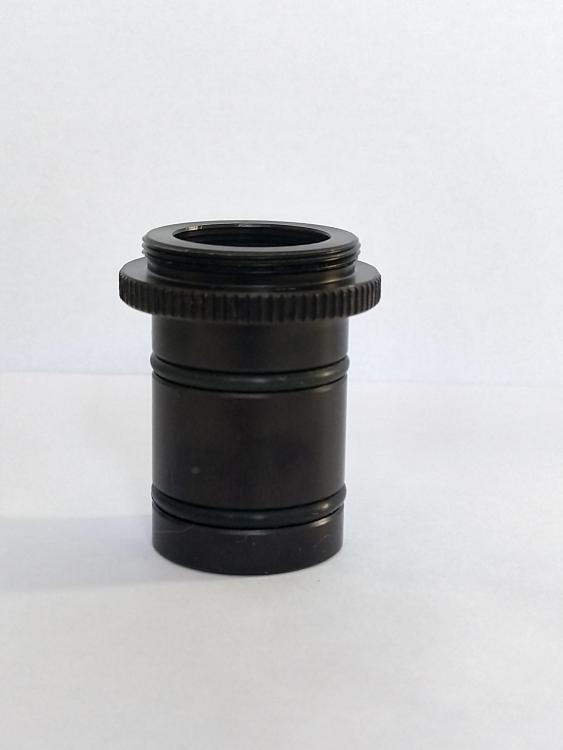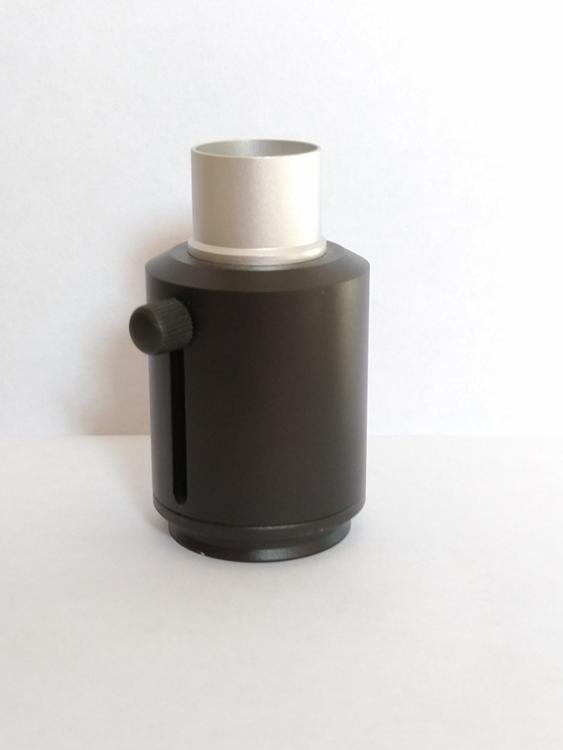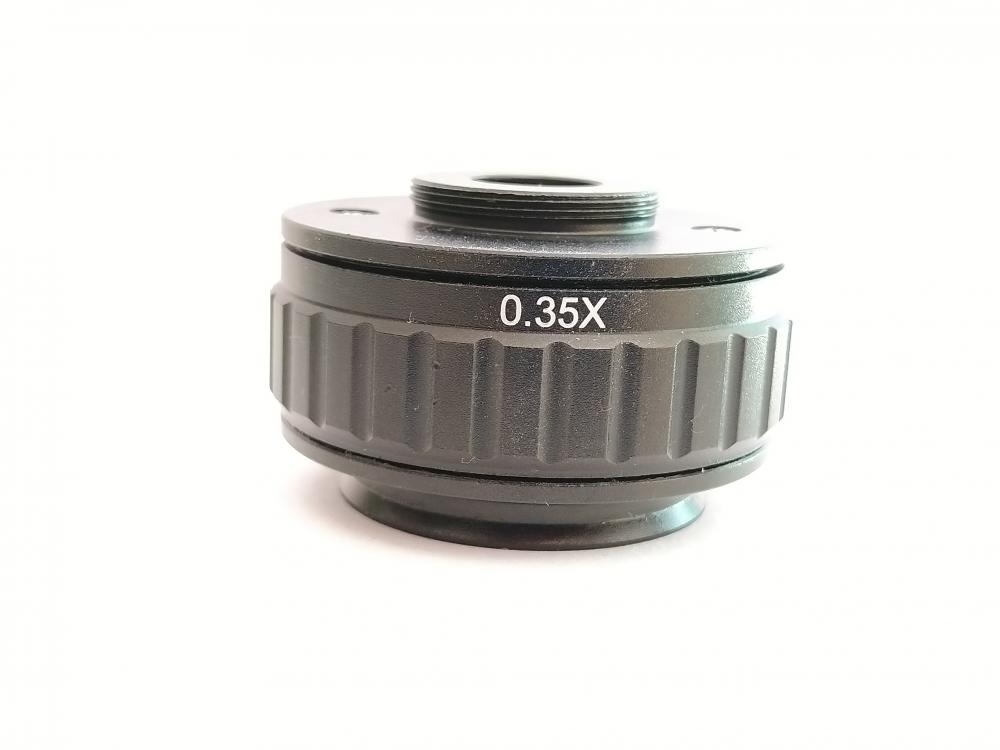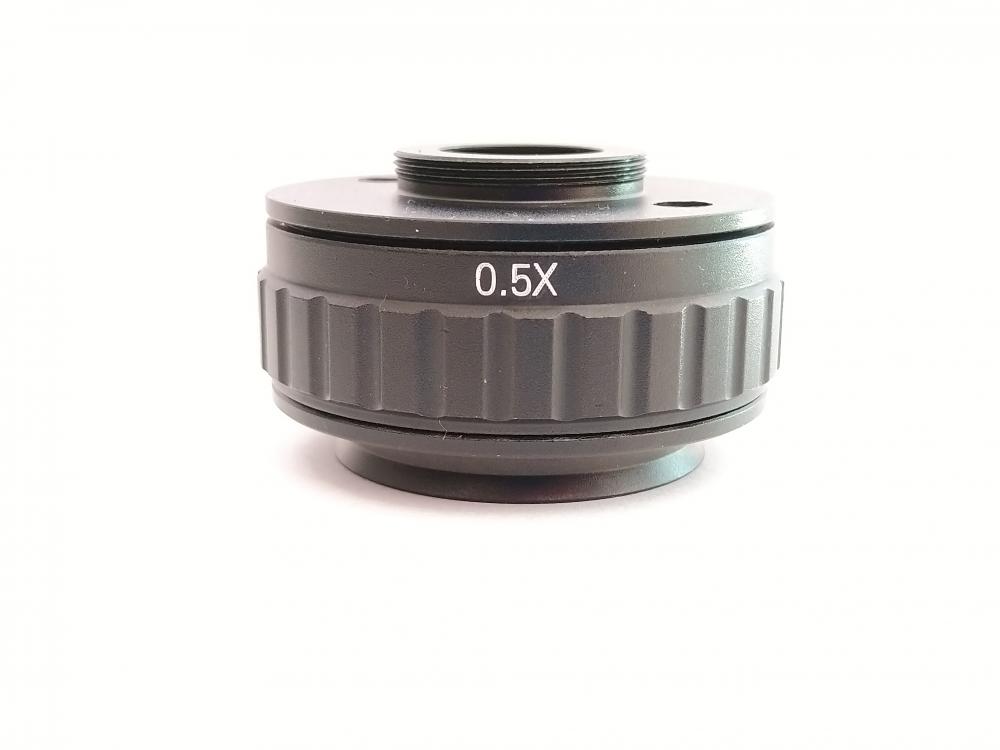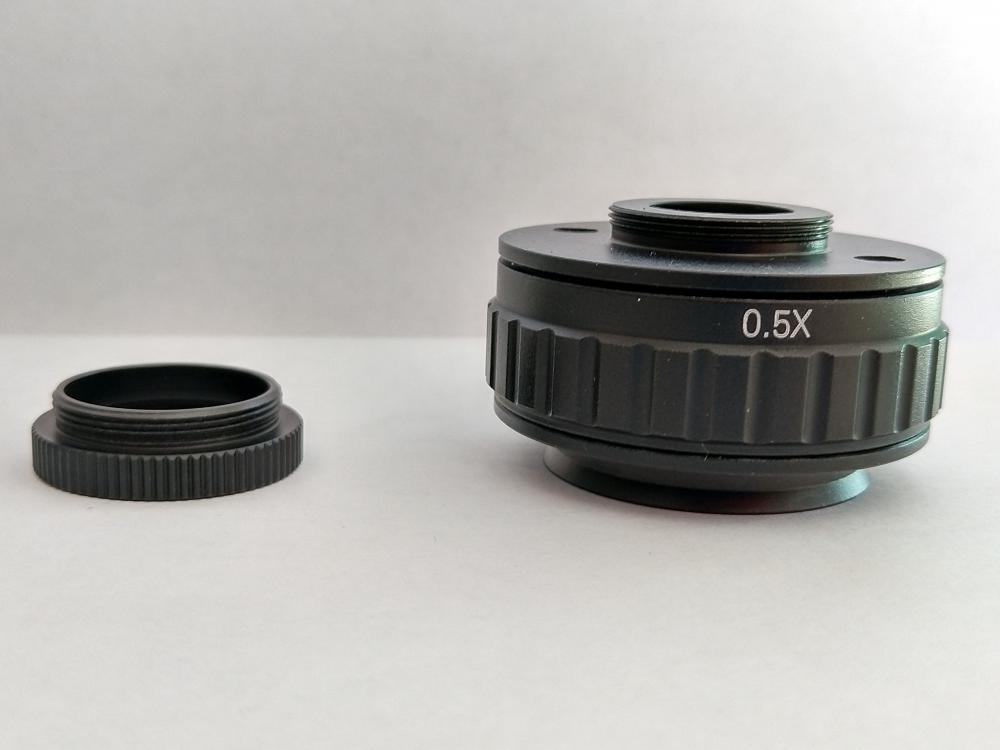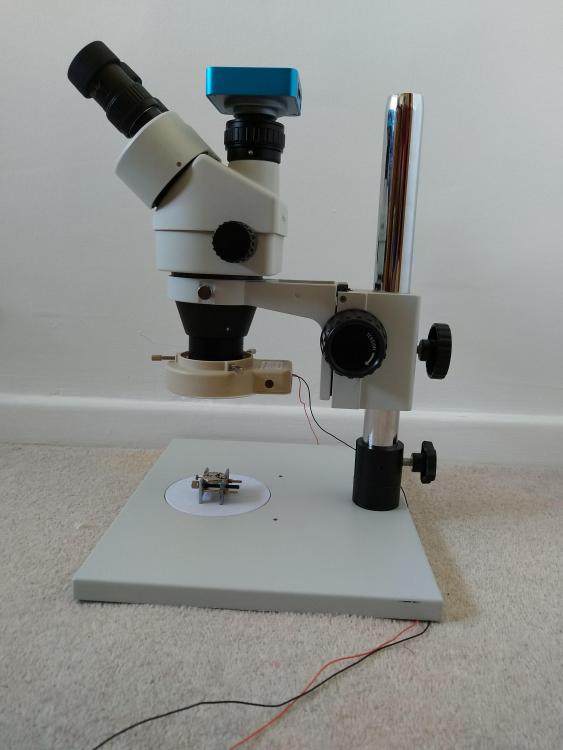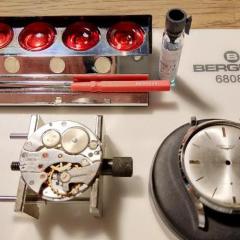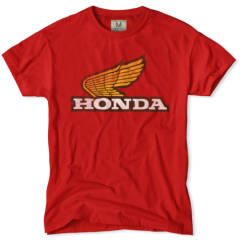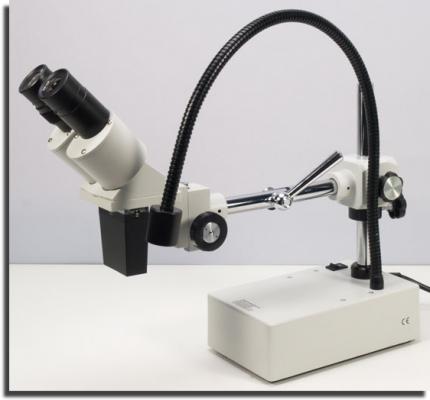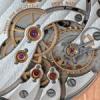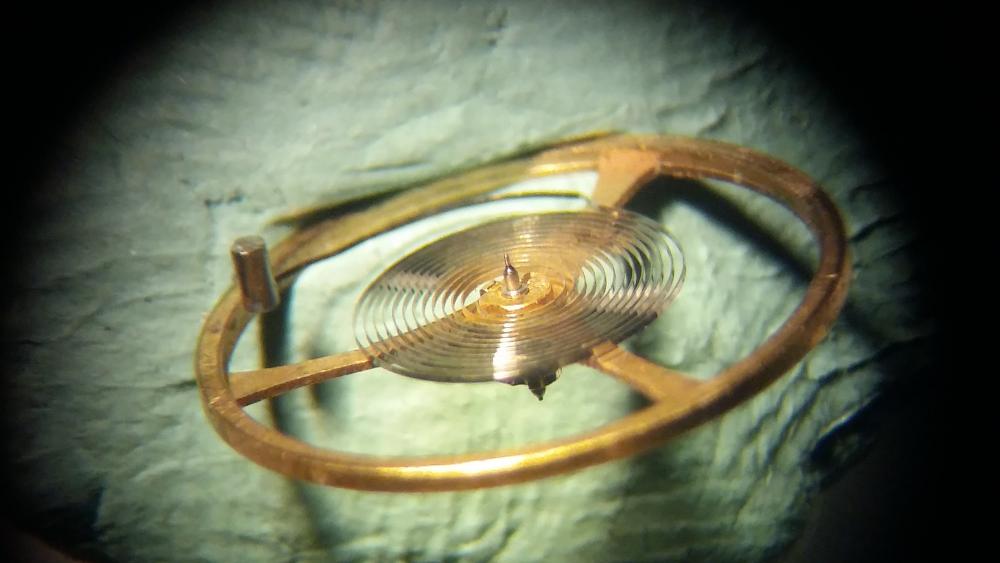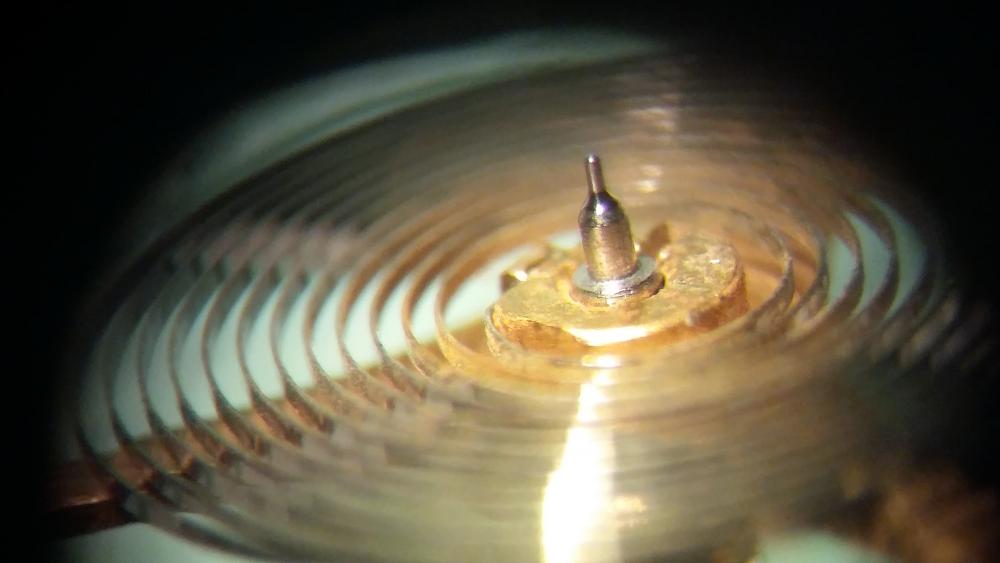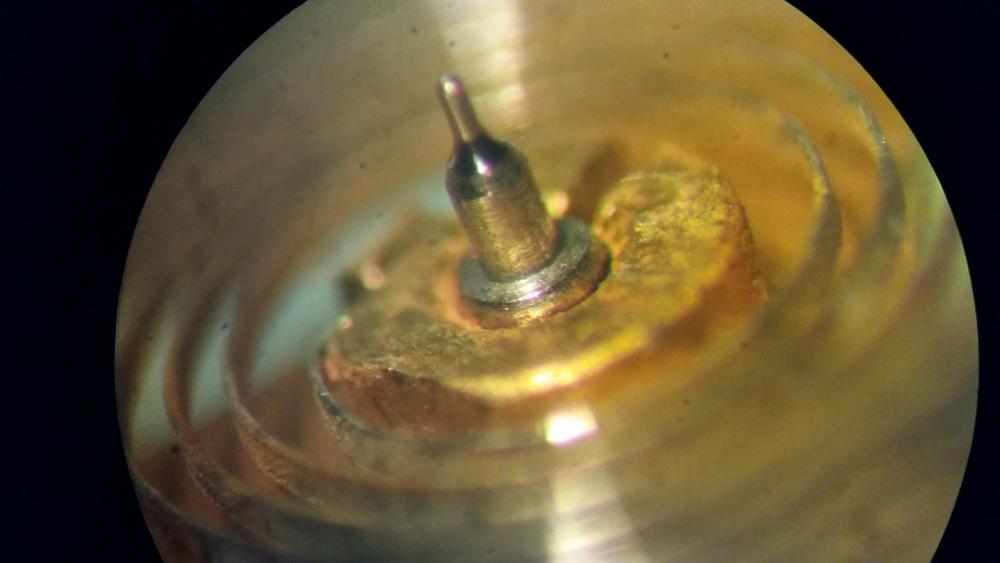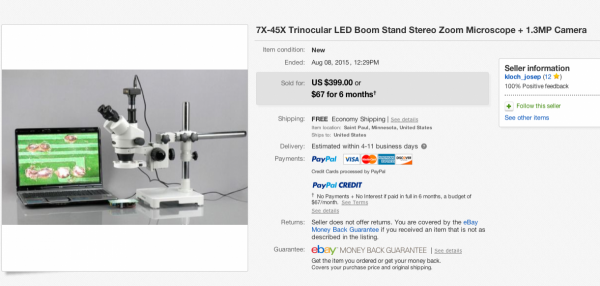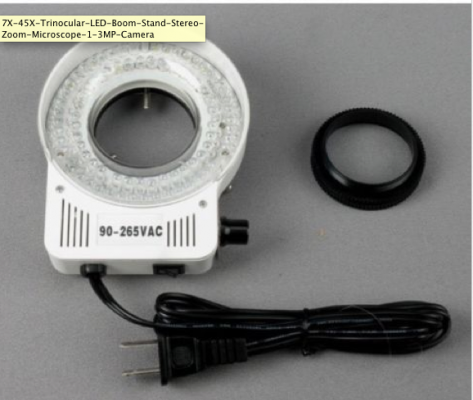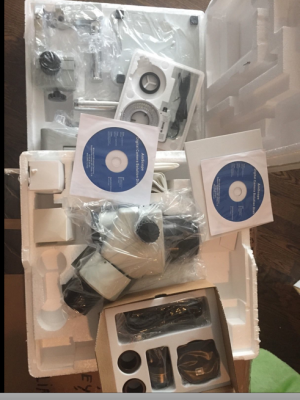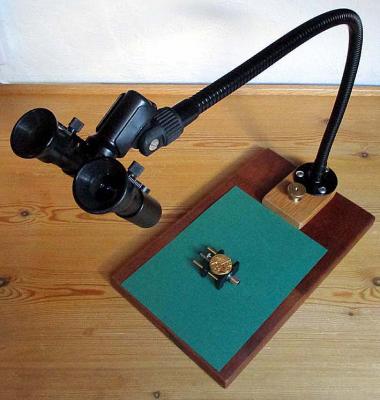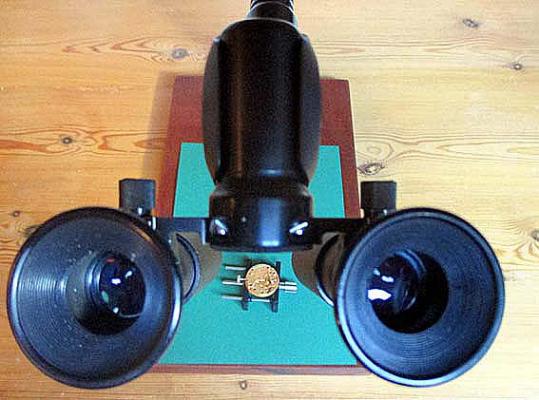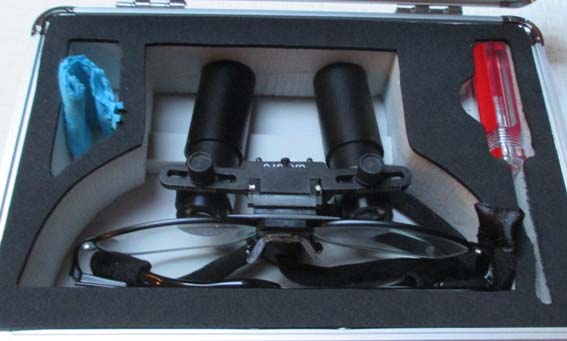Leaderboard
Popular Content
Showing content with the highest reputation on 02/07/22 in all areas
-
Also had trouble with that issue in the past. Especially a very flat mainspring (0.63) nearly drove me mad. Finally I designed a little tool and a friend with a 3D-printer produced it for me. Once screwed down it holds the spring and its ring tight on the barrel. Then I can just push it down with a brass screwdriver. No „flipping out“-danger anymore.3 points
-
2 points
-
If you take the time to read the topic I had linked above you will be presented with the names of the most used online suppliers, I don't believe anything new can be added here - there's no secret place for parts.2 points
-
Hi to members of the group My name is Mark and I’m very new to the watch repair world. I have been using the fantastic on-line course and have taken a lot from it My main interest is in vintage military type watches and I have just completed my first overhaul of an Enicar G.S.T.P. Pocket watch in which I replaced a snapped mainspring, total strip down / clean and re-lumed the dial and hands I’m happy to say that it is now running well and it officially becomes the first watch in my vintage collection1 point
-
Thank you for your introduction and welcome to this friendly forum. We all look forward to your contributions and continued involvement.1 point
-
1 point
-
Vevor is possibly the largest Chinese retailer for various machinery, they always have the best price, of course nothing they sell is manufactured outside China. Above I have explained why I recommend against presses where the spindle is not inline with the pillars, or at least have a cast body or sturdy construction. If you go with this one let know how it does.1 point
-
The tape on the wire wound resister almost looks like mica. The tape on the L&R here looks exactly the same. Is there a reason you are replacing it? They use kapton tape in 3d printers (printhead) for up to 400F. Here is an amazon link for way too much of it: https://www.amazon.com/Mil-Kapton-Tape-Polyimide-yds/dp/B006ZFNB2I I did a little testing and the Flir is showing 171 C about 340 F on the resistor here.1 point
-
1 point
-
Hey @ED209the part I printed is on its way to you. Should get it by Friday. Cross our fingers!1 point
-
Hello and welcome to the forum. I would say you have already made a good start, Nice tools, look well built.1 point
-
1 point
-
1 point
-
I'm not surprised, despite these labelled "Swiss made" and not cheap in reality they are mass produced, with little, if any, attention to the availability of parts to the general public. Be assured that painting would produce terrible results, unacceptable by any standard. You can however look for generic hands to fit what I believe is the used module, Ronda Z60 quartz chronograph, hands sizes 1.5, 0.9, 0.25mm1 point
-
What watchweasol suggested above is an Ebay seller (UK) named pocketwatchparts, not a website. Below the direct link for convenience https://www.ebay.com/usr/pocketwatchparts1 point
-
Why it has to be separated? If it's for lubrication only that can be done without taking apart. 1 droplet of 9010 into 10 of petroleum ether, drive it there by the side, capillary action will bring it up.1 point
-
1 point
-
I too was worried about the effects of isopropanol on shellac in an ultrasonic. I've mentioned before that I tested an old fork for 3 mins without any signs of shellac loss. For cleaning I use Elma WF Pro for about 5 mins, then limit the isopropanol to about 1 min - which should be enough to dissolve any residues. BTW @rossjackson01 if you want a small, cheap ultrasonic with a heater, this is the one I bought. Works very well.1 point
-
1 point
-
1 point
-
https://www.cousinsuk.com/product/wheel-hand-roller-remover-bergeon You can try this or the Presto type pullers. They don't cost $800. Or if you are like me, I made my own with 2 sewing needles glued into a hole on the end of a chopstick.1 point
-
1 point
-
Hi JD sorry to hear you tale of woe. There is a sellet on ebay "pocketwatchparts" who regularly has escapement wheels and levers etc, might be worth a look.1 point
-
My girlfriend just bought this properly! We are currently ripping out the interior to refurbish it but the plaque in the picture above is staying.1 point
-
1 point
-
I strongly agree with the above statements about working on cheaper watches first. Pocket watches are bigger and easier to start on. I serviced about 15 before moving on to wristwatches - I felt quite confident, but suddenly the parts seemed so small ! Buy some cheap Swiss movements, - I recommend doing at least 5 before having a go at your precious Omega. Or do the same one 5 times, practicing handling the balance/hairspring, oiling the balance jewels. I know from experience there is a high probability of trashing the first movements1 point
-
1 point
-
Finally, finally got my stereo scope. AmScope SM-4NTP along with a ring light & rubber eyepieces. Still waiting for the 0.5 barlow, so I don't have much working distance yet. Still, I'm having a ball looking at the balance wheel pivot on one of my old Seikos, amazing to see so clearly what's going on.1 point
-
1 point
-
Hello Everyone, I am going to share the details of my adventure with a trinocular stereo microscope and a digital camera attached to it. I bought a second hand AmScope SM-1T (1st purchase) and I had no experience with stereo microscopes before. What I am going to write might be evident for some, but probably will help someone out with limited experience with trinocular stereo microscopes, I might be even wrong with some of the things I am writing/thinking, please feel free to correct me as the last thing what I would like to do is to mislead somebody else. You might have a different type of stereo microscope and you might have a different type of digital camera so you might be in a different situation I have been. A stereo microscope is incredibly useful and is a completely new world for the watchmaker in my opinion. You can see things you were not able to see before, worn pivot holes, pivots, cracks in jewels, bent hairsprings, and dirt everywhere, etc. I wanted higher working distance though and I also wanted to take pictures and record videos about watch movements and one of my initial goal was also to be able to take a picture about the whole movement. To achieve this I bought a number of things one buy one waiting weeks between the different items as I was not sure what to buy exactly. The AmScope SM-1T I own: The only thing I was sure about was the illumination so I bought a led light ring (2nd purchase): "220V 60000LM Adjustable Microscope LED Ring Light Illuminator Lamp For STEREO Microscope Excellent Circle Light EU plug" The first one did not work for long, its circuit board died after a week or so. I got a replacement however I am still using the original led light ring without its original circuit feeded directly by my bench power supply with 12V. I did not know that time that there are adapter rings for ring lights so I drilled 3 little holes into the head of the microscope. Now this sounds silly and indeed it is, but it became handy later as I can use these three little holes to attach my ring light to the microscope head without loosing much of the working distance if I want to. I bought an adapter anyway (3rd purchase): "M48X0.75 48 mm Thread Aluminum Objective Adapter Ring Stereo Microscope to Attached LED or Fluorescence Ring Light" The adapter ring: The next thing what I bought was a 0.5x barlow lens (4th purchase) for the AmScope as I knew it would increase the working distance and the field of view and additionally would decrease the magnification. I went again for aliexpress and my number one priority was to get one as cheap as possible. Now this might be one of my biggest mistake here. I cannot compare the one I bought to any other 0.5x barlow lens, but I am not happy with this one: "0.5x WD160 Working Distance 160 mm Barlow Auxiliary Reduction Objective Lens with Mounting Thread 48 mm for Stereo Microscope" I cannot get a sharp image with this one so ended up not using it at all. You can attach your ring light directly to this one. This article talks about the barlow lens and suggests to buy a quality product from a trustworthy manufacturer: https://www.microscopemaster.com/barlow-lens.html 0.5x barlow lens for the AmScope: Blurry images when fully zoomed in: Fully zoomed out, too much light and not very sharp: Then I bought a digital camera (5th purchase) for the trinocular port namely: "2020 Full HD 1080P 60FPS 2K 3800W 38MP HDMI USB Industrial Electronic Digital Video Microscope Camera For Phone CPU PCB Repair" but it was not compatible with the adapter the AmScope came with as it was designed for AmScope own digital camera, i did not know that at this stage though so I bought (6th purchase) a "CMOS CCD USB HDMI Industrial Video Camera Adapter Electronic Eyepiece Microscope 23.2mm to C Mount For Biological Microscope" because i hoped that it would help me to attach the digital camera to the AmScope adapter and I would be able to focus it. It turned out that this was not the case. I could not get any useful image, not even close. The digital microscope camera: AmScope adapter for their own digital camera what I could not use: And the adapter which fits into the AmScope adapter above but it did not help: Meanwhile I bought (7th purchase) a "0.7X WD120 Trinocular Microscope Stereo Microscope Auxiliary Objective Lens Barlow Lens" barlow lens for the AmScope. The other issue with the 0.5x barlow lens for AmScope was that the working distance went to the sky and I could not comfortably sit in my chair as I could not reach the eyepieces easily. I was hoping that the 0.7x barlow lens would sort that out, but it did not turn out the way I hoped for, I am going to write about the working distances later. However I am satisfied with the 0.7x barlow lens, I can get sharp images. You have to use a ring light adapter with this one as you cannot directly attach your ring light to it. I am happy with this/ fully zoomed in: Still happy, fully zoomed out: Then I was advised to buy a 0.5x or 0.35x c mount adapter for the digital camera so I bought (8th purchase) "0.5X C mount Lens Adapter Focus Adjustable Camera Installation C mount Adapter" first, and yes it worked finally! The digital camera came with a ring and that ring must be used otherwise you cannot sync the focus between the digital camera and the microscope. 0.5x adapter for the digital camera: And the ring what must be used: As I was not happy with the 0.5x barlow lens for the AmScope but I still wanted to take pictures about the whole movement I thought i would buy (9th and final purchase) a 0.35x c mount adapter for the digital camera what would bring me a wider field of view so I bought a "0.35X C mount Lens Adapter Focus Adjustable Camera Installation C mount Adapter" too. And indeed it was the case, but it seems that the body of the microscope comes into the picture, what you can see in the upper right corner of the following picture so I ended up not using it. 0.35x: Check the upper right corner: When you use the microscope your field of view is a circle, but when you use your digital camera your field of view is a rectangle. So i give you and idea about the dimensions and the working distances now. Digital Camera with 0.5x adapter for all cases. Field of view with 0.5x barlow lens for the stereo microscope: Zoom full in 7.5 mm x 4 mm Zoom full out 5.3 cm x 2.9 cm Field of view with 0.7x barlow lens for the stereo microscope: Zoom full in 4.5 mm x 2.5 mm Zoom full out 2.9 cm x 1.6 cm Field of view without barlow lens for the stereo microscope: Zoom full in 4.5 mm x 2.5 mm Zoom full out 2.9 cm x 1.6 cm Stereo microscope field of view and working distance. No barlow lens. Zoom full in diameter: 4.5 mm Zoom full out diameter: 30 mm Working distance: 8 cm (from the workpiece and the bottom of the ring light which is attached to the 3 drilled holes) 0.7x barlow lens. Zoom full in diameter: 5.5 mm Zoom full out diameter: 40 mm Working distance: 11.6 cm (from the workpiece and the bottom of the ring light which is attached to the 3 drilled holes, ring light adapter is not attached to the barlow lens as it would further reduce the working distance.) 0.5x barlow lens. Zoom full in diameter: 10.5 mm Zoom full out diameter: 70 mm Working distance: 20.5 cm (from the workpiece and the bottom of the ring light which is attached to the 3 drilled holes) Conclusion: I ended up using the 0.7x barlow lens for the microscope, and the 0.5x adapter for the digital camera which is a must have. The ring came with the camera is also a must so you would be able to sync the digital camera with the microscope so they would be both in focus at the same time. I had to ditch the 0.35x mount adapter for the digital camera because the body of the microscope came into the picture and I had to ditch the 0.5x barlow lens for the stereo microscope as it did not give me sharp images. Even if I would have a good quality 0.5x barlow lens which would give me sharp images I still would need to sort out the seating position by purchasing an adjustable chair (mine is adjustable too but it did not go high enough to reach the eyepieces) however it would give you an amazing working distance of about 20 cm bearing in mind that it halves the original magnification. My original wish to be able to take a picture about the whole movement probably was not something reasonable. First of all a microscope as its name suggests is about to focus on tiny things not on things like a whole movement, my phone takes better quality pictures than this microscope if we talk about the whole movement. Additionally I could not take a good quality picture (apart from the blurriness) about the whole movement when the 0.5x barlow lens were on the stereo microscope (and they had to be on to be able to get the whole movement in the field of view), because there was too much light and regardless of the settings of the digital microscope i could not sort it out. An additional thought, as I mentioned earlier I hoped that the 0.7x barlow lens would sort out the "too high" working distance and instead of 20cm it would be around 15 cm, but it came to 11.6 cm which is doing the match is about right as the original working distance without any barlow lens is 8 cm, the 0.5x gives me 20.5 cm, but if it doubles the working distance it should really be about 16 cm. The 10.5 cm what I have with the 0.7x barlow lens is just about enough, it would be better if it would be a bit bigger. Probably a new chair and quality 0.5x barlow lens for the stereo microscope would be ideal for repairing, but none of the setup would be ideal for taking pictures about whole movements. AmScope video about the Barlow lens: https://youtu.be/ozPae_nnbH4 My setup: This video is captured by the digital camera itself, its size was just too big ~ 160M so I could not upload to wrt, however I wanted to show you its original quality so decided to upload it to my google drive, to my surprise when you click on the link the video quality is much worse than the original I uploaded, i dont know why is that happening, probably google tries to save the bits going trough the network: digital camera recording This is what I see from my chair: digital_camera_1.mp4 One more thing to add, the digital camera started to play up after a while, its main menu came up and it switched itself off. Contacted the seller and they gave me a new firmware. I flashed the camera and there is no issue since. This is my longest post so far, I am happy I am at it's end.1 point
-
@martygene at the time I made that post I was using a 3x clip on magnifier by Eschenbach same as this . Not the cheapest available at about £45 to £55 but very good. They have become a little scuffed since then but do still get used occasionally. The biggest issue I have with them is that my spectacle lenses partially counter the magnification. I have since acquired a vintage Binomag head set. These can be picked up off eBay for between £15 - £25, the lenses are glass so don't scratch too easily, and are very comfortable to use. These are also about 3X mag but because I can use them without my specs I get the full benefit. Working distance for both the Binomags and the Eschenbachs is about 100mm (4") and width of field about 8cm (a little less with the Eschenbachs). I now also work at a bench the top of which is at upper chest height when I'm seated so posture issues are a thing of the past too. My microscopes sit on a desk next to the bench so they are also at a much more useable height.1 point
-
I would guess that depends on how long you work by the microscope. At a labaratory one mostly costum fit the microscope to fit your hight and so on. I use a standard desk but have an adjustable chair instead. Some of our yonger personel even likes to stand on a ergonomic rubber matt instead of sitting. Here is some instructions from Leica about the matter.1 point
-
I know that everyone and every text says to never wind in by hand but every watchmaker has done it out of necessity at some point. If the spring is not too tall in regards to barrel diameter it really can be done without distorting it. Think of a typical clock barrel, might be 20mm tall and 35mm diameter. Pretty close height to diameter ratio. Taking the spring out requires a winder- as does putting it in. A typical watch barrel might be a depth (spring height) of 1.3mm with a diameter of 10 or 11mm. We take the spring out without a winder without damaging it. It can go back in too, winderless. But you do have to "wind"it. On a t-end spring get your t in the slot, and wrap around 180 degrees, in, wrap 180 degrees, in, untill you're in. As long as the height to diameter ratio isn't to small the risk is low- with a bit of practice. I used to demonstrate this to students and show that the spring remains flat after multiple in-and-outs. They got it too after a few tries. If course winder is always best but really with t-ends (or worse- seperate t pieces) handwinding is ok if done with care.1 point
-
1 point
-
that is a nice setup, delroyb. i struggled a while with what to get for microscopes. there are a lot of nice ones out there. but, i took the low road and got a bulova microloupe. low budget but highly capable.1 point
-
Cheers mates, I have with great joy reading about this microscope, and this great photoes. Thought I just should tell you about this type of microscope I have been using for some time. And it working great... www.brunelmicroscopes.co.uk BM1 long arm microscope I think there is a tread her someplace about it, but I can find right now. But this is the best investment I have done... Working with reluming, setting the second arm, placing the balance wheel and so on....1 point
-
Hi, This is the set up I have attached a cheap L.E.D ring flash on to the lens this was bought very cheaply off Ebay for £10.00 including postage it can be used as a flash or a constant light source and comes with a number of adapters to fit various lenses. The eyepiece adapter is a old Canon fit cheap chinese extension tube with a aluminium tube attached which fits directley over any one of the eyepieces. These adapters can be bought ready made off Ebay for various D-SLR cameras or compact cameras.1 point
-
I have now cobbled together a eyepiece adapter for my MBC made from a old canon extension tube and a turned aluminium tube that fits over the eyepiece. Using it I have found the 8x eyepiece to be optically better than the 14x at low magnifications the fall off around the edges is very pronounced with only the central portion of the frame sharp as in the example below But this improves as the magnification increases, Contrast and sharpness are good Russian optics have always been good, having taken a lot of equipment and manufacturing facilties when germany was split after the war, but there is no depth of field to speak of so focus is very shallow in all these pic I have focused on the top of the centre wheel pinion, The scratches on the top of the pinion are pin sharp but focus falls off on the screw heads,1 point
-
So I got myself a sorry-state russian microscope (4x-100x) (I believe it's been dropped, so I fixed the broken stand, I cleaned it and I aligned the glass prisms the best I could - work in progress). For more details on the microscope model, checkout http://microscope.modelengines.info/. Samples below. The pictures are taken with a phone by putting it on an eyepiece. The subject is a beat-up balance wheel from a Poljot 2209. Looking through the microscope, the image is clearer, with better contrast and, most important, stereoscopic. Thank you, Bogdan1 point
-
1 point
-
1 point
-
Jewel closeup with new cheap but good USB microscope camera. Good for examining jewels and gears for damage Sent from my iPhone using Tapatalk1 point
-
The desktop microscope I use is this Free Shipping !! 3.5X-90X! 50/50 SPLIT SIMUL-FOCAL MICROSCOPE DOUBLE BOOM STAND TRINOCULAR STEREO ZOOM MICROSCOPE http://s.aliexpress.com/qQ3mInia Arrived within 7 days of ordering & it's fantastic. I've enclosed some images using the 0.5x lense. TBH I've never needed the 1x lense that was also supplied with the microscope as I really don't need to work that closely. Normal 150mm working distance Zoomed in to cap jewel It's TRINOCULAR so you don't have to switch between eyepiece & camera. Sent from my SM-G920F using Tapatalk1 point
-
After doing some research and pondering the idea of getting a microscope, I found one on the 'bay this weekend. It was delivered just a few hours ago. It is a 1970's American Optics Stereo Star 569. I really can't complain taking into consideration that the price was ridiculous and it included delivery. It does need some cleaning up, but other than that it is in very good shape. It came with 15x optics and the zoom range is from .7-3.0x. I think this will do nicely for my needs. I have not touched a microscope since biology class back in the 70's. So it is going to take me some time to get used to it. Once I finished setting it up, I noticed that I have approximately 4-5 inches of clearance to work under the scope. I just have no idea if that will be enough for working with watches. I am thinking about getting some 10x opticals and see if that increases the work area. I also found a 0.5x Auxiliary lens and, according to what I've read, that will increase the work space. I may give that a try. Looking for some advice from those with experience working with these types of scopes.1 point
-
A friend just helped me remember this is me trying to hold my phone camera over one lens 20x The unit goes up to 40x came with two sets of lenses 10x and 20 x with two view ports 1x and 2 x I thought it was a great deal for 175.00 USD Sincerely, jim1 point
-
This is the camera I purchased 5MP TV HDMI USB Industry Digital C-mount Microscope Camera TF Video Recoder DVR,lens for microscope camera http://www.aliexpress.com/item/5MP-TV-HDMI-USB-Industry-Digital-C-mount-Microscope-Camera-TF-Video-Recoder-DVR-lens-for/1836066761.html Really is fantastic, I particularly like the fact I can just put a memory card in & it doesn't have to be connected to the computer. I do have it connected to a monitor via hdmi to review images etc. But I'd definitely recommend it. Sent from my GT-I9505 using Tapatalk Sent from my GT-I9505 using Tapatalk1 point
-
Hi Ricardo, it's definitely worth getting the 0.5x reduction lense which should give you 3.5 to 45x magnification. I got a similar microscope of Aliexpress, probably similar to the amscope model you received. it's a trinocular like yours and has simul-focal. I purchased a 5mp hdmi camera to go with it. The problem I found was the camera was always out of focus to the subject I was viewing. I had to constantly adjust the zoom to take images/video. After purchasing 3 different cmount reduction adapters 1/3, 1/2, 1/5 I realised if I used the 0.5x cmount adapter, then placed a 3mm spacer between the camera & adapter it worked a charm. Sent from my GT-I9505 using Tapatalk1 point
-
1 point
-
Influenced by Lawson's post 'Carl Zeiss - Eye Mag Pro' I bought a cheaper 6x 350mm pair of Galilean binoculars from China. These are intended for dental use but any dentist trying to use a 6x magnification mutst have control of the head position far better than I can manage. The viewed object was wobbling by about 50% of the 45 mm field of view. The optical quality is excellent and so I have turned them into a binocular microscope using a heavy duty flexible support with standard end pieces as sold for microphones. Here in the bench mode with a Benson Aquatite movement - ample working distance. The only work that was needed is shown: a support that fits firmly into the mike clip and a pair of eye cups with adaptor rings to match the eyepieces of the binoculars. Here mounted on my lathe base-board for some micro-drilling.1 point
-
There is good advise here! I placed it in my wish list already! Thank you Lee for the review (maybe good stuff for your blog?) and the rest of the gang for the nice input/solutions. Now I gotta have it!!!!1 point


